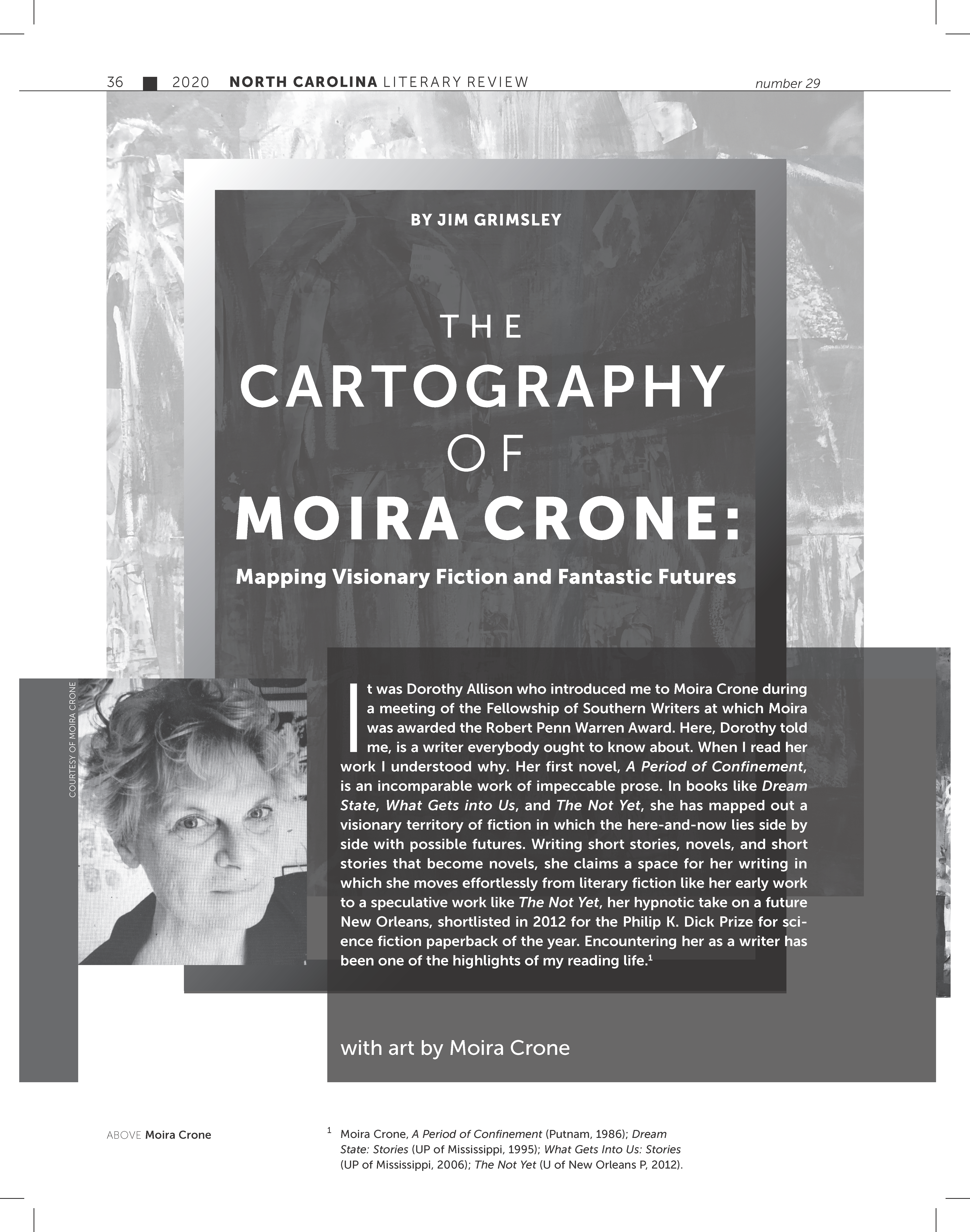Friday from the Archives: “The Cartography of Moira Crone: Mapping Visionary Fiction and Fantastic Futures,” the 2020 John Ehle Prize interview by Jim Grimsley from NCLR 29 (2020)
To slightly alter a phrase: You can take the woman out of North Carolina, but you can’t take the North Carolina out of the woman. Moira Crone, early of Goldsboro but mostly of New Orleans, shared in this 2019 interview conducted by friend Jim Grimsley, how North Carolina permeated her entire body of writing.
About her first novel, Grimsley inquired, “It’s very tempting to read this first novel as autobiographical in some aspects of its conception: it is certainly a vivid, intense look at love, marriage, parenthood. Did you need that kind of visceral connection with this book? Has that need changed for you as you’ve moved into other works?
Crone answered, “Yes, that book is largely autobiographical. I needed to write it that way. When I was done, that was done. I have not written that way since. Endless autobiography might become a kind of torture for the writer. For the reader, I don’t know. If you always write autobiography or memoir, there is the danger that eventually this constant reportage could disturb your relationships with the people around you. I have seen this happen to people I know. I think my other works have elements that persist in my psyche, but these elements are not the same as the story of my life, the horizontal story also known as “reality.” These elements exist more or less archetypally, in the depth, not in the everyday facts: the beautiful distant mother, the other,
protecting female characters. The desire to paint, or the profession of painter, is something that many of my first-person characters have had. In my psyche, it is very strong. I am fulfilling it to some degree now and this is cathartic.”
Grimsley later asked, “The way you work with race in your Fayton stories appears more overt than in what you write about Louisiana, though one of your best moments in writing through this issue comes in “I Am Eleven” in Dream State. It’s a subject you tackle in more detail in What Gets into Us and again in The Ice Garden. Given that the circumstances of our real world bring this issue constantly to the fore, I wonder how you face this reality in your writing?
Crone replied, “Well, as a white woman raised in the South in the 1950s and ’60s, I was born into a situation of structural racism. That segregated world, now looks bizarre, antiquated, incredibly cruel, and yet, still, the attitudes are persistent in new forms, now, and horribly difficult to kill. I always knew the societal attitudes were wrong, but there was little I could do about them, except my sisters and I “integrated” Mrs. Hall’s church, supported her in many of her endeavors, which included various small businesses and fundraising. We would sell her cakes to white people telling them they were for our church, etc. My parents were not in agreement with the racist attitudes of the place and the era: they were New Deal, Adlai Stevenson Democrats. I have written about this ’50s and ’60s world some in my stories, especially in relation to the ways that servants in white households in those days related to their bosses, and how their bosses related to them, how the presence of servants who did so much of the emotional work in the household created a shallowness and purposelessness among the white employers, especially the women. Alice Walker and many other black writers have covered this ground, too.”
Read the entire interview on ProQuest or order the NCLR 2020 issue.
